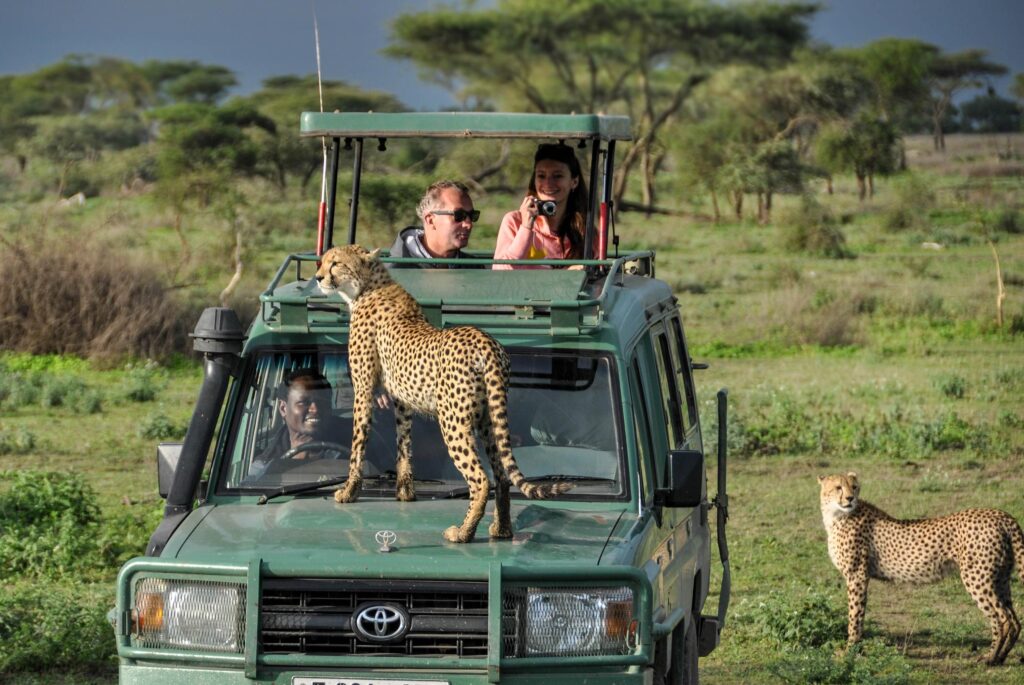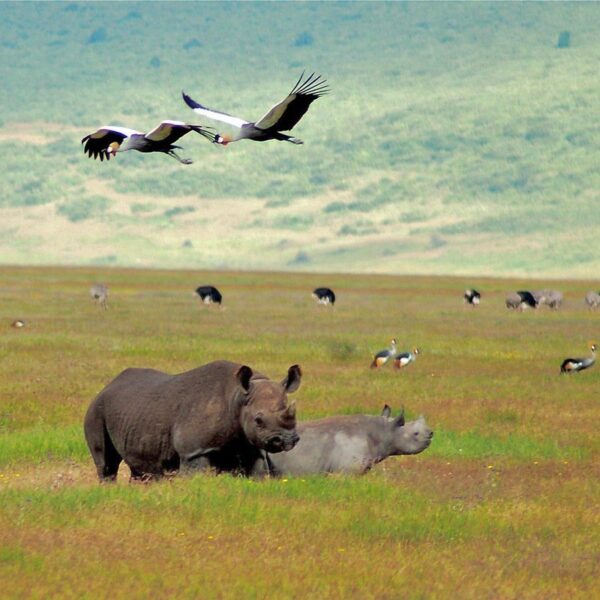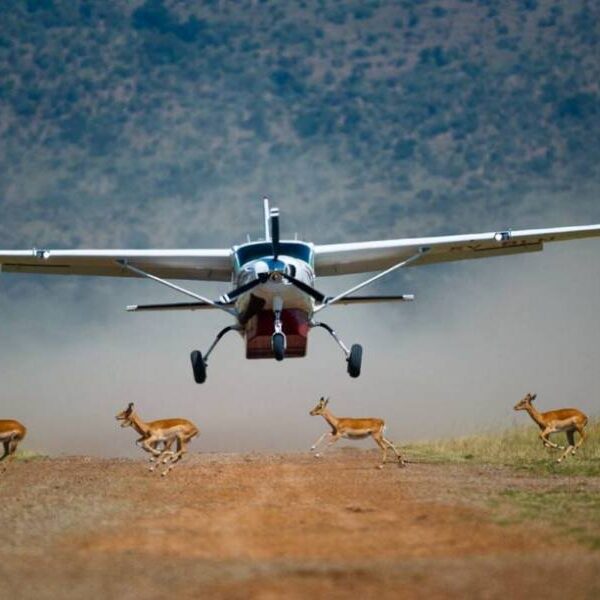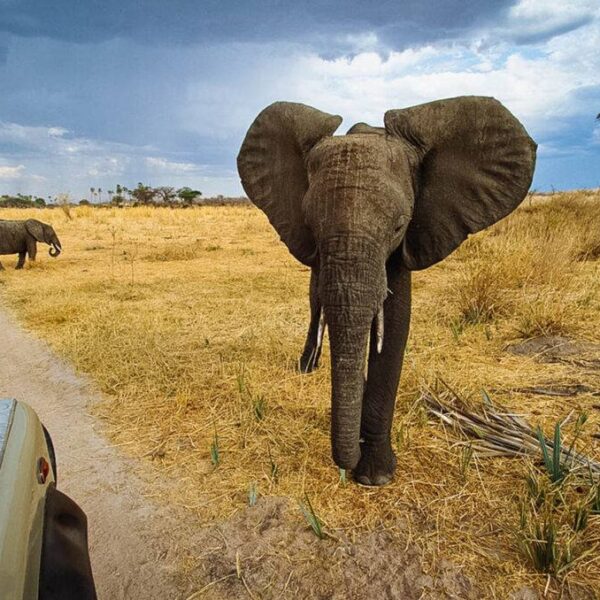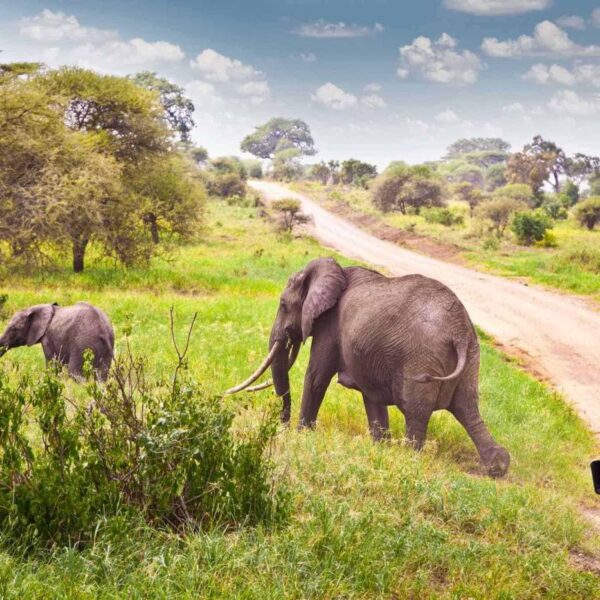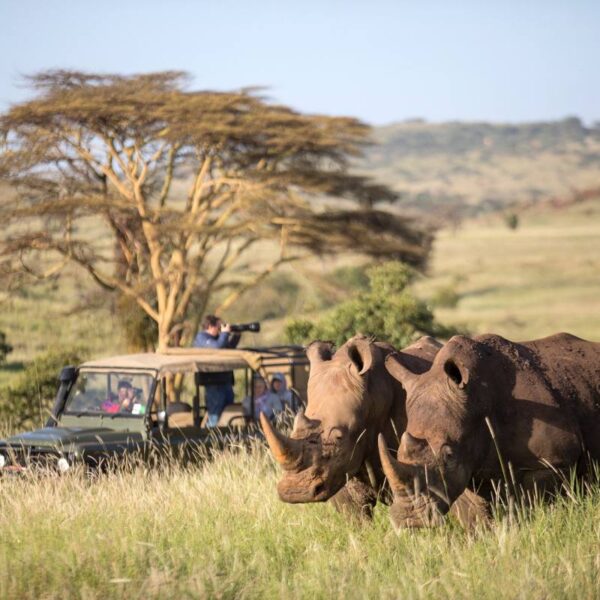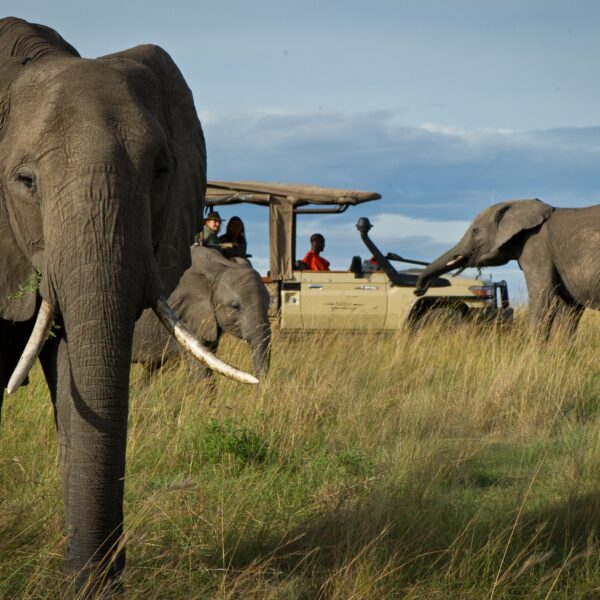Story of Wildebeests Migration in Serengeti
Approximately two million wildebeest participate in the annual migration that begins in the southern Serengeti each year when half a million calves are born. Many seasoned Serengeti guides agree that this is their favorite time of year because the air is full of life and activity.
Why do wildebeest migrate?
The wildebeest migration, covering around 800 kilometers, is the longest mammalian migration on the planet. This movement occurs as grasses in the short-grass plains begin to green up in preparation for the rainy season. Predators are more readily noticed in these places, making them a good choice for calving. But when the plains dry up, the wildebeest must migrate west for water and food. The grasses in the northernmost part of the ecosystem get the most water yet provide the most minor nutrition. Wildebeests migrate here during the dry season until the south grows vegetation again. The outcome is a clockwise movement from the south, west, north, and back to the south.
The Great Migration, in short
There is nowhere else in the world where you can see a finer illustration of the cycle of life than this. Wildebeest calves begin their migration in the southern Serengeti. True wildlife fans are treated to a visual feast as hundreds upon thousands of calves are born within a few weeks, despite predators like lions and hyenas continuously searching for infants.
When the drought begins in May, the herd goes north into the Masai Mara in Kenya, cutting down the lush green grass, swiftly followed by the gazelles and zebras. The trek is not without peril, as travelers must contend with an estimated 3,000 crocodiles while fording rivers.
Perhaps most notably, the renowned Serengeti lion population. Even though there is plenty of hoofed meat here, these large cats have it rough in this harsh environment. However, the image of a pride of lions working together to bring down a wildebeest will stay with you forever.
The return of the migration into Serengeti from Masai Mara coincides with the start of the brief rains in late October. By December, the herds wander past Seronera – a tiny village in central Serengeti where the official Serengeti Visitors’ Centre is situated – to return to their calving areas again, and the circuit is complete.
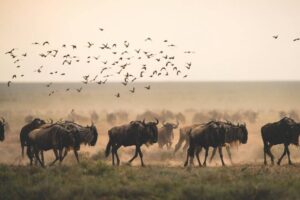
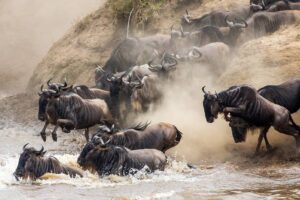
The Great Migration in detail
Your Serengeti safari itinerary should be an excursion to witness the Great Migration. How, then, do you guarantee your presence when it transpires? To put it simply, it is not possible. It is essential to recognize that there is invariably an element of risk involved in determining when to visit the Serengeti. It is customary for the Great Migration to transpire as described below; however, your Tanzania safari remains a mix of skill and experience for your guide to bring you close to the action.
Serengeti National Park has an enormous congregation of zebra, Thomson’s gazelle, Grant’s gazelle, eland, and two million ungulates annually. This wildlife extravaganza is the pinnacle in Africa, if not the entire globe. While there are yearly fluctuations, the Serengeti migration adheres to a reasonably consistent annual cycle determined by regional precipitation patterns. The Great Migration cycle comprises the following succeeding epochs:



